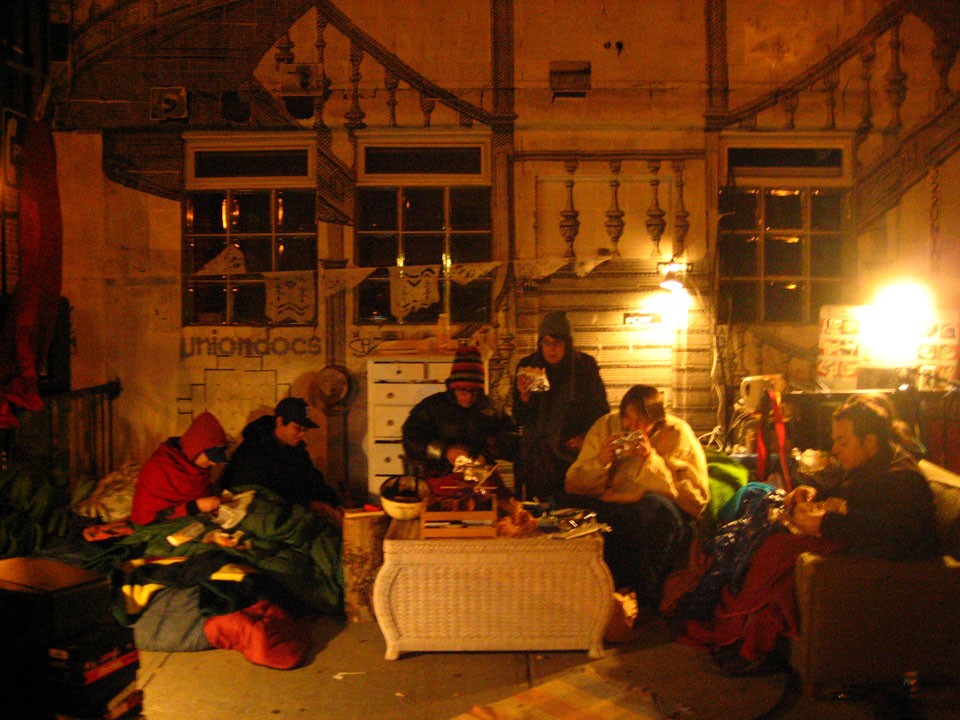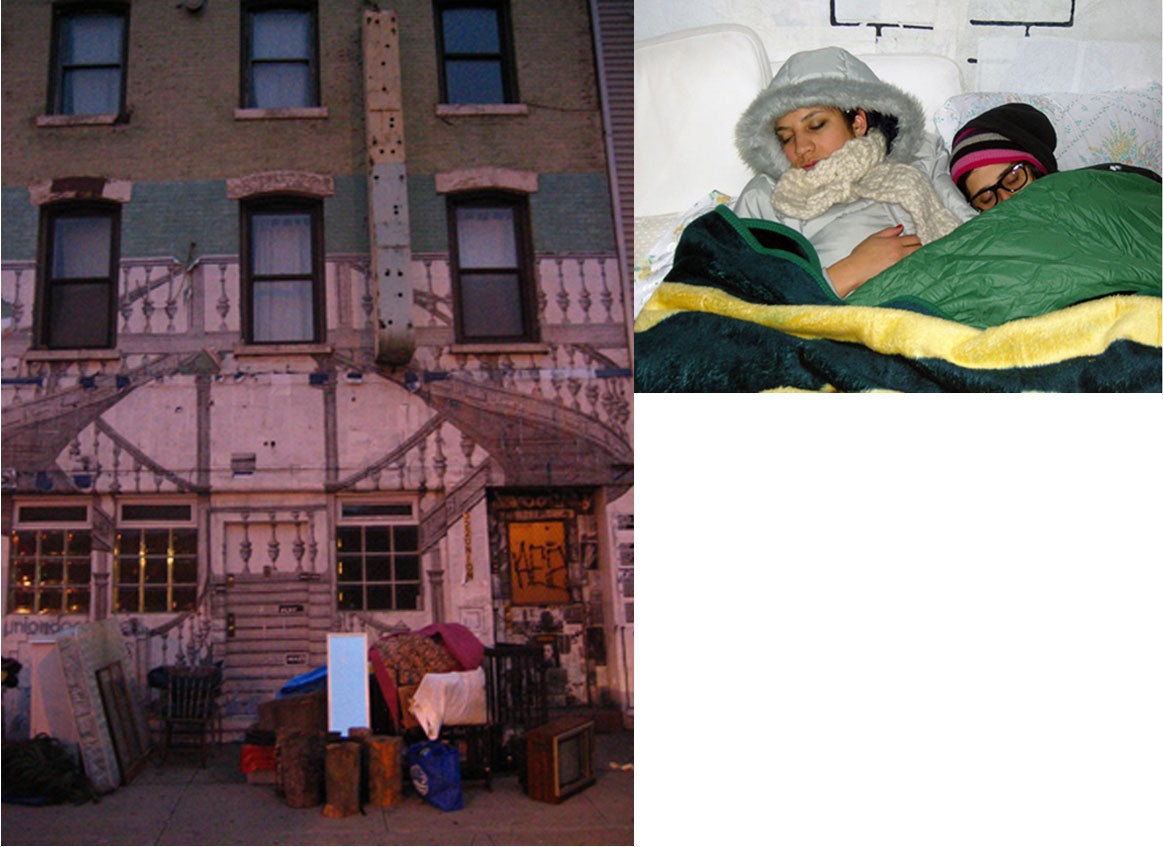..................................................................................................................................................................
Sidewalk
by the Urban Homesteading Project
Francisca Caporali, Laura Chipley and Pilar Ortiz
Single-channel video documentation of site-specific work
7’22 / 2007
Through temporary public interventions, the Urban Homesteading Project explores the act of making temporary living spaces out of found and recycled objects, as a means for creating positive interactions within a community. In 2007, UHP was sponsored by Union Docs to create a 24-hour living space on a Brooklyn sidewalk out of furniture and discarded personal items collected off the street. Community members were invited to eat, sleep, cook and watch videos with us, and to contribute unwanted personal items to the homestead. The natural order of the street was altered by the arrangement of recycled furniture and equipment, carefully placed on the sidewalk. Neighbors, friends, and passers-by were invited to participate of shared activities (relaxation, discussion, games, napping, storytelling, cooking, craft making, games, knitting, and watching movies). Lively discourse about trash, recycling of available resources, and survival and public space took place and was documented on video. At the end of the 24-hour experiment, all items used in the homestead were redistributed to passersby and local residents.
By observing the movement of the street, the manifestations of change in a neighborhood, the flow of cars and people, we are learning about every place; we unfold its multiple layers. Every intervention creates shared experiences and projects new memories onto a site. By recreating home situations and inviting the community to participate of these fictional spaces, the Urban Homesteading Project not only transforms the apparent physical configuration of a space, but also its social and symbolic dimensions. This project provide us with a method for the investigation of places, available resources, and models of sociability in the
contemporary city.




